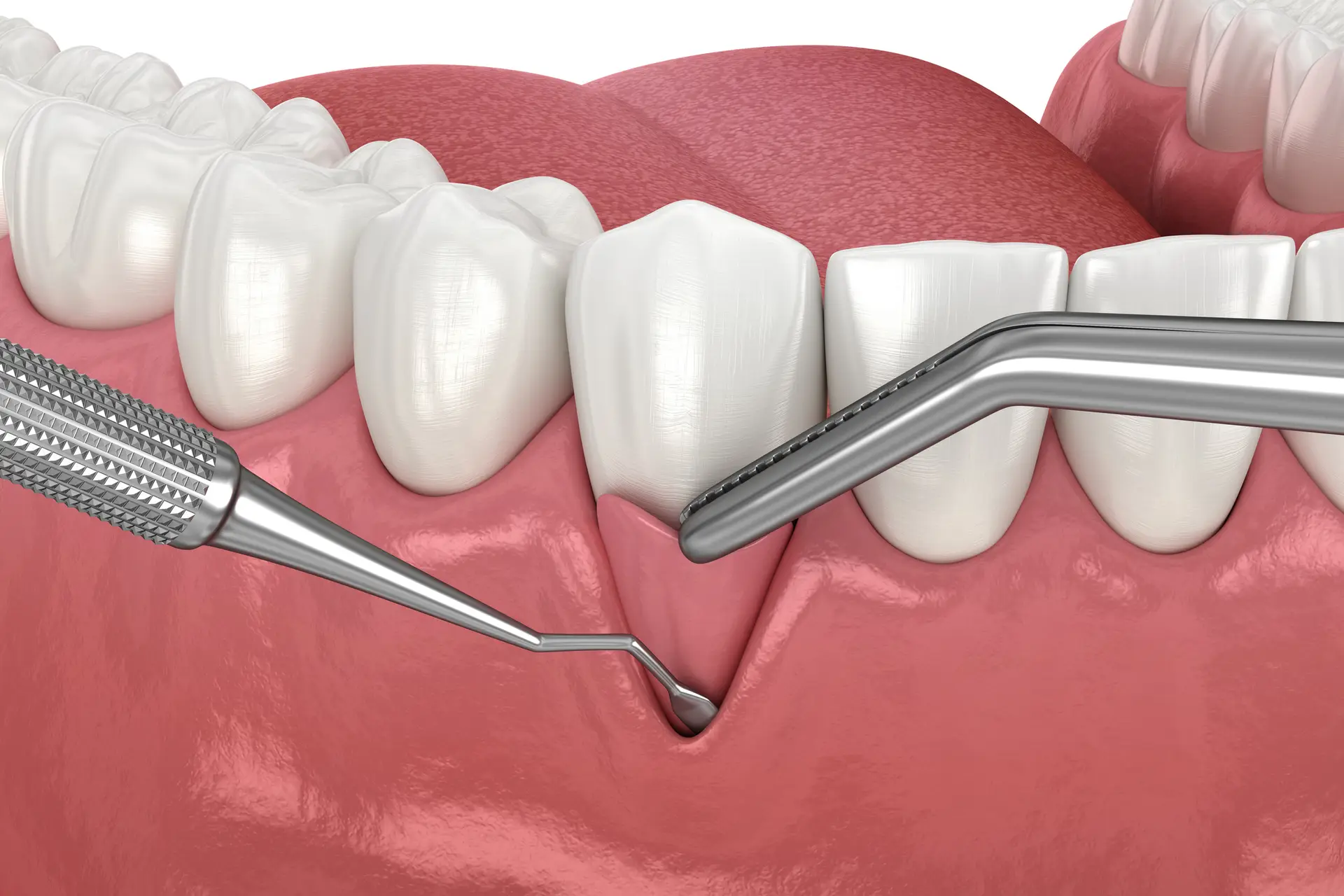Periodontal Surgery & Treatment
Home / Family and Cosmetic Dentistry / Periodontal Surgery & Treatment


Periodontal surgery and treatment procedures that are used to treat gum disease and other periodontal issues. These treatments involve the careful removal of plaque, tartar, and infection from the gums and bone. In some cases, a pocket of tissue may be created to provide access to clean and repair the inflamed gum tissue. In other cases, periodontal surgery may be required to restore the health of the gums. Treatments may also include scaling and root planing, bone grafting, and gum grafting. After the surgery, antibiotics, anti-inflammatory medications, and mouth rinses may be prescribed to help in the healing process.
Laser therapy for gums, often referred to as laser periodontal therapy, offers several advantages in the treatment of gum disease and other periodontal issues.
Here are some of the key benefits:
1. Minimally Invasive: Laser therapy is less invasive than traditional surgical methods. It involves less cutting and suturing, which can lead to a more comfortable experience for patients.
2. Reduced Pain and Discomfort: Many patients report less pain during and after the procedure compared to traditional periodontal treatments. The precision of lasers can minimize damage to surrounding tissues.
3. Faster Healing Time: The use of lasers can promote quicker healing due to less trauma to the gum tissue. Patients often experience faster recovery and can return to their normal activities sooner.
4. Effective Bacterial Reduction: Lasers can effectively target and eliminate harmful bacteria in the gum tissue, which helps in reducing infection and promoting healing. This can be particularly beneficial for patients with periodontal disease.
5. Precision in Treatment: Lasers allow for precise targeting of affected areas, which helps preserve healthy tissue. This precision can lead to better outcomes and less collateral damage compared to traditional methods.
6. Reduced Bleeding: Laser therapy tends to cause less bleeding during the procedure, as the laser can cauterize the tissue as it works. This can lead to a cleaner treatment area and less post-operative bleeding.
7. Improved Patient Comfort: Many patients find laser treatments to be more comfortable, often requiring little to no anesthesia. This can reduce anxiety and improve the overall experience.
8. Decreased Risk of Infection: The sterilizing effect of lasers can minimize the risk of post-operative infections, contributing to a smoother recovery.
9. Versatility: Laser therapy can be used for a variety of dental procedures beyond gum treatments, including teeth whitening, cavity treatment, and oral surgery, making it a versatile tool in dental practice.
10. Enhanced Treatment Outcomes: Some studies suggest that laser therapy may lead to better long-term results in managing gum disease compared to traditional treatments.
Overall, laser therapy for gums represents a modern approach to periodontal care that combines efficacy with patient comfort, making it an increasingly popular choice among dental professionals and patients alike.


